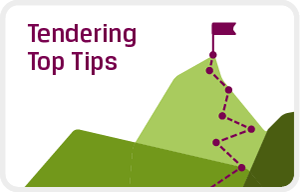It’s or Its?
Many people struggle to choose between “it’s” and “its” because they think it takes a possessive apostrophe.
Possessive adjectives (my, your, his, her, their, our, its) do not need an apostrophe.
Only use an apostrophe with “it’s” when the word means it is or it has. Without the apostrophe, “its” means belonging to it.
Consultancy Proposal
When writing a consultancy proposal it can be very difficult to know how much to “give away”.
To resolve this, it is useful to focus on the way you work and the desired result, along with the approach you will take.
By describing the steps or phases you recommend, you avoid telling the client the actual solution.
Persuasive Writing
Writing persuasively is a skilled task however there are elements which can be applied by any author.
You should always keep the reader, their anticipated response and your desired result in mind.
With tenders, this will ensure you describe the benefits and make the document customer focused
People Positive
The surest way to lose a bid is to think you will lose it.
It is important that everyone involved in working on a tender has a positive mindset and understands the key messages you want to convey.
The bid manager’s role should include maintaining enthusiasm and consistency within the bid team.
Template Errors
Templates are useful tools because they save you time and effort.
In theory, they are ‘ideal’ documents which contain all the relevant information and follow your company procedures.
In practice, because they have been repeatedly amended, they often contain superfluous information and typos.
Price Balance
A customer’s objective is never just to spend money, so leading with your price would be absurd.
Their objective is to pick a product or service that best meets their need.
Buyers are not allowed to make assumptions when evaluating proposals so check you have told them all the things you need them to know, not just the price.
Don’t Know You Know
Using the four stages of competence model (Martin M Broadwell), many people are unaware of the things they know they know (unconsciously competent).
This is why it is difficult for them to convey their knowledge to others.
When detailing a process in a bid or proposal you should clearly describe all the parts and not overlook the basic steps.
Template Maintenance
Proposal and bid templates are often re-used without much thought being given to their contents.
Why not spend a couple of hours critically appraising your standard documents and ask your colleagues to do the same?
You can then compare notes and decide which sections to rewrite or update
Business Development
While some businesses are ‘on hold’ at present, there are many which continue to operate.
These firms still have supply chain requirements so opportunities exist to make yourself known to their buyers.
An initial personal approach can then be followed-up with a tailored proposal outlining the benefits you can deliver to their company.
USP
Simply being seen as different to others in the market (having a Unique Selling Point) will not win you a contract.
To award you the work, clients must believe they are receiving more of what they value from you than from your competitors.
As such, bid writers need not worry about differentiation but they should always offer added value and a win theme.
Executive Summary
The executive summary is the most important part of your entire bid, proposal or tender document.
It should start with a section describing where the client is now and why things need to change.
It should also contain details of your proposed solution, reassurance that you are a capable organisation and information about your win theme.
Assumptions
It is sometimes necessary to state the assumptions on which a proposal is being made.
A common mistake is to list them in a negative way which may cause the reader to feel short-changed.
It is better to use positive phrases such as “all values up to 100 will be covered” rather than “values over 100 will not be included”.































































